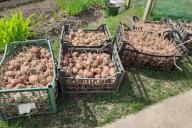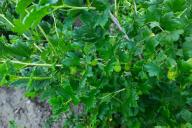Some kinds of meat aren't that popular, but they are also delicious - and beef tongue is exactly that!
You can't always just fry or roast beef tongue to make it tasty, because cooking it takes more time and effort.
It's definitely worth it, though - you just need to know some of the following tricks.
Tenderizing
Beef tongue can be tough, so it's important to tenderize it before cooking.
You can do this by simmering the tongue in a pot of water for about 1-2 hours until it becomes tender.

Seasoning
Once the tongue is tender, you can season it to add flavor. You can use a combination of salt, pepper, garlic, and other spices of your choice.
Cooking Methods
There are various cooking methods you can choose from.
One popular method is braising, where you place the tongue in a pot with some liquid (such as broth or wine) and cook it slowly over low heat until it becomes tender and flavorful.
Another option is grilling or broiling the tongue for a delicious smoky flavor.
Flavorful Liquid
When braising the tongue, you can add flavorful ingredients to the liquid, such as onions, carrots, celery, and herbs.
This will infuse the meat with additional flavors during the cooking process.
Cooking Time
The cooking time will depend on the size of the tongue and the cooking method you choose.
Generally, braising takes about 2-3 hours on low heat, while grilling or broiling may take around 15-20 minutes, turning the tongue occasionally to ensure even cooking.
Checking Doneness
To check if the tongue is cooked properly, insert a fork or skewer into the thickest part.
If it goes in easily and the meat is tender, it is done. The internal temperature should reach 160°F for food safety.
Resting and Slicing
Once the tongue is cooked, allow it to rest for a few minutes before slicing.
This will help retain the juices. Slice the tongue thinly against the grain to ensure tenderness.









